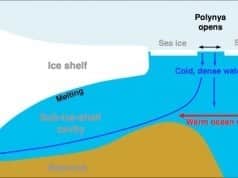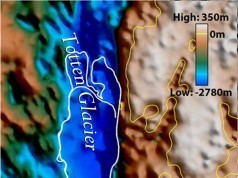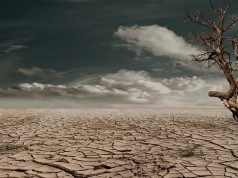The IPCC recruits the same people who work with climate models on a daily basis to write the section of its report that “evaluates” them.
We’ve been told the Intergovernmental Panel on Climate Change (IPCC) is comprised of the world’s top scientific minds. But my research has uncovered something rather different.
One group of IPCC authors are 20-something grad students. Even though their experience of the world is neither broad nor deep, the IPCC has long relied on their expert judgment. Another group are those who’ve been appointed because they’re of the right gender or from the right county. (Since the IPCC is a UN body it’s hardly surprising that it considers these factors important.) A third group are activists and activist scientists.
But there’s yet another large contingent of people – climate modelers. While these individuals are often called scientists, their line of work has little in common with traditional science.
The scientific method involves forming an hypothesis, testing that hypothesis in the real world, and then confirming, adjusting, or abandoning the hypothesis according to what those real-world tests reveal.
Because there’s no duplicate planet Earth on which experiments may be safely conducted, no one actually knows what will happen if a little more carbon dioxide is added to the atmosphere. (Scientists believe CO2 used to comprise less than 0.03% of the atmosphere – 280 parts per million – prior to the industrial revolution. Currently, at 390 parts per million, it’s approaching 0.04%.)
All this climate concern is based on a hypothesis that says our planet is so unstable a slight increase in one particular trace gas will trigger disaster. Since there’s no way to actually test this hypothesis, some people have adopted an alternative approach. They say that supercomputers programmed with complex mathematical formulas confirm that a bit more CO2 really will lead to bad things. In the view of climate modelers, these computer simulations are as good as hard evidence.
But this requires a rather large leap of faith. The world (both natural and human) is chaotic and unpredictable. It rarely unfolds in the manner that even the smartest people, aided by graphs, charts, and computers think it will.
Unlike those in other professions, climate modelers inhabit a virtual reality. If an engineer’s bridge is faulty, it doesn’t matter how highly his fellow engineers may have praised its design, the real world will make its shortcomings evident to everyone. Since climate modelers are insulated from real world checks-and-balances (there’s no way to verify their long-term predictions in the short term), the only thing that seems to matter are the opinions of other modelers. This is a recipe for tunnel-vision. It is group-think waiting to happen.
The research bodies and governments that fund climate modeling teams around the world don’t appear to have taken any precautions against group-think. Nor has the IPCC subjected climate models to rigorous evaluation by neutral, disinterested parties.
Instead – as outlandish as this sounds – the IPCC recruits the same people who work with these models on a daily basis to write the section of the climate bible that passes judgment on them. This is like asking parents to rate their own children’s attractiveness. Do we really expect them to tell us their kids are homely?
The relationship between one country’s climate modelers and the IPCC illustrates this point. George Boer is considered the architect of Canada’s climate modeling efforts. As an employee of Environment Canada (which also produces weather forecasts), he has spent much of his career attempting to convince the powers-that-be that climate models are a legitimate use of public money. There has been a direct relationship over the years between how persuasive he has been and how many staff he’s been permitted to hire, how much computing power he’s been permitted to purchase, and the amount of professional prestige he has acquired.
Given that his own interests are closely linked to the effectiveness with which he has promoted climate models, he is emphatically not the sort of person who’s likely to conduct the cold, hard assessment the public is entitled to expect before the entire world begins taking climate model results seriously.
Nevertheless, when the IPCC chose 10 lead authors to write a chapter titled Climate Models – Evaluation for its 1995 report, Boer was among them. So was Andrew Weaver, another Canadian whose entire career depends on climate modeling. (The term ‘climate modeler’ would seem to apply to a minimum of five of that chapter’s eight other lead authors.)
When the same chapter of the 2001 edition of the climate bible got written, the story was similar. Weaver and two more climate modelers were selected to repeat their lead author roles. Boer, along with four other Canadians who earn their living as climate modelers, all served as contributing authors. (Gregory Flato, John Fyfe, Steve Lambert, and Francis Zwiers.)
By the time the IPCC published the 2007 climate bible, had it realized that asking climate modelers to evaluate their own handiwork was a big, bad, biased idea? Nope. Climate modelers once again comprised the overwhelming majority of lead authors for the Climate Models and Their Evaluation chapter.
On that occasion the lead author from Canada was a colleague of Boer’s named John Fyfe. As Fyfe’s online bio indicates, his official title is: Research Scientist, Canadian Centre for Climate Modelling and Analysis. Three more Canadians who depend on modeling for their bread-and-butter also served as contributing authors. (Paul Kushner, Adam Monahan, and John Scinocca.)
A Canadian is now one of two senior (coordinating) lead authors for the chapter titled Evaluation of Climate Models that will appear in the upcoming edition of the climate bible (see page 5 of this 27-page PDF). His name is Gregory Flato and, quelle surprise, he works at the same institution that employs many of those mentioned above.
I’m sure he’s a marvelous human being, but this gentleman knows full well that if the world were to decide that climate models are a colossal waste of time and money, he and his colleagues would be out of a job.
There is not the slightest possibility, therefore, that his chapter will come to such a conclusion. This means that nothing like an independent assessment of the strengths and weaknesses of these models is actually taking place.
But the story gets worse. Climate modelers also write other IPCC report sections – including the crucial attribution chapter. This is where the most important question of all gets decided: Is the slight recent warming of the planet due to human activity or is it simply part of a natural warming and cooling cycle that has been going on for eons? For the IPCC’s 2007 report, the two most senior authors of that chapter – Gabriele Hegerl and Francis Zwiers – were both climate modelers.
The IPCC may claim that the large contingent of climate modelers who contribute to these reports are the world’s best experts, but I think that’s a stretch. In July 2007, five IPCC authors wrote an article for Scientific American in which they referred to climate models as crystal balls.
On the one hand, they declared it a certainty that people, plants, and animals would all be living with the consequences of human-induced climate change “for at least the next thousand years.” On the other, they said:
Unfortunately, the crystal ball provided by our climate models becomes cloudier for predictions out beyond a century or so.
Each of us has to make up our own minds regarding whom to trust and what to believe. But when I became a grownup, I stopped believing in crystal balls.





